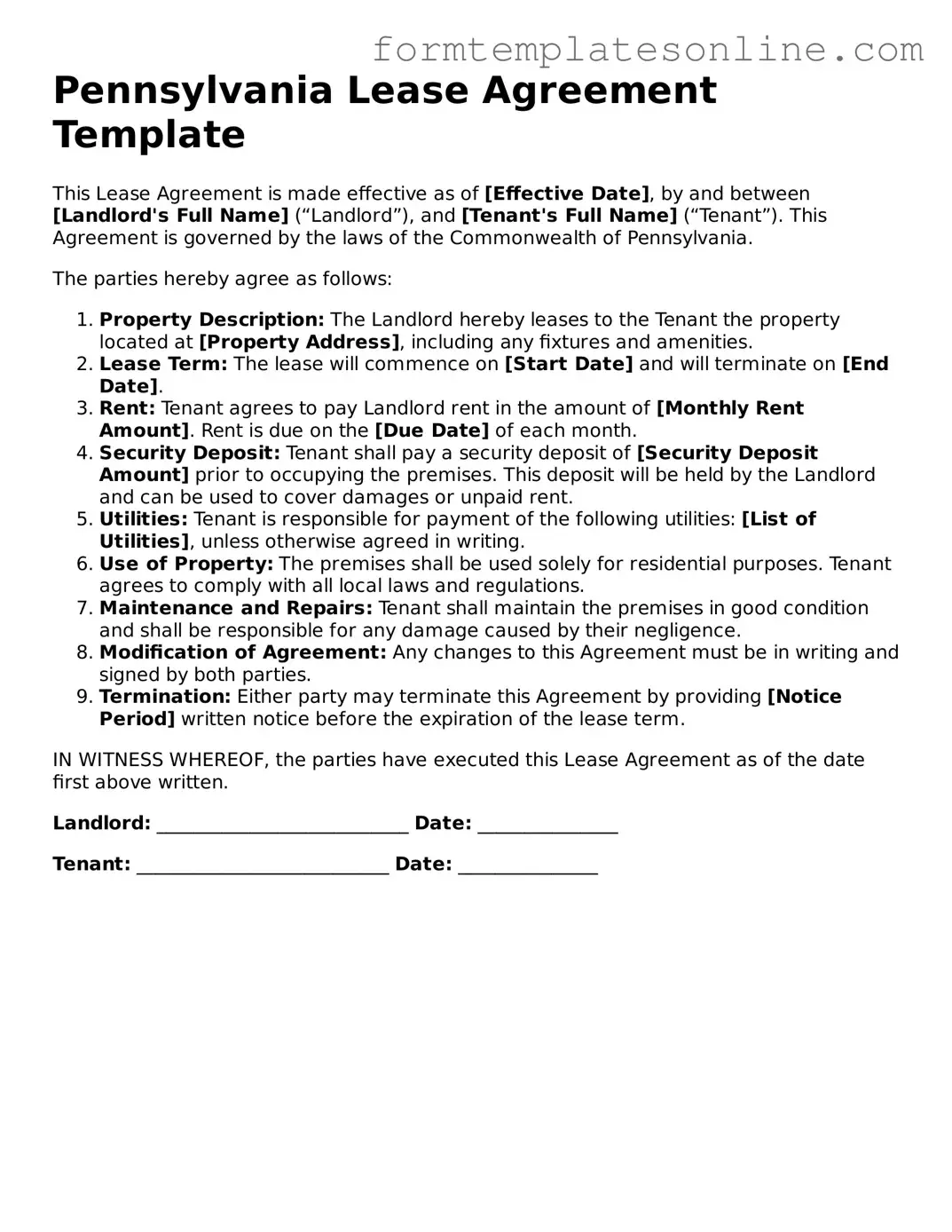What is a Pennsylvania Lease Agreement?
A Pennsylvania Lease Agreement is a legally binding contract between a landlord and a tenant outlining the terms and conditions for renting residential or commercial property in Pennsylvania. This document details the responsibilities of both parties, including rent payment, maintenance obligations, and rules regarding the use of the property. It is essential for protecting the rights of both the landlord and the tenant.
What should be included in a Pennsylvania Lease Agreement?
A comprehensive Pennsylvania Lease Agreement should include several key elements. These typically consist of the names of the parties involved, the property address, the duration of the lease, the amount of rent and payment due dates, security deposit details, and provisions for maintenance and repairs. Additionally, it should outline rules regarding pets, subleasing, and termination of the lease. Clarity in these areas helps prevent misunderstandings and disputes.
How long is a typical lease term in Pennsylvania?
Lease terms in Pennsylvania can vary widely, but they commonly range from one year to month-to-month agreements. A one-year lease is standard for many residential rentals, providing stability for both landlords and tenants. Month-to-month leases offer flexibility, allowing tenants to stay without a long-term commitment. However, it is crucial for both parties to agree on the term length and any renewal options in the lease agreement.
Can a landlord increase rent during a lease term?
Generally, a landlord cannot increase rent during the lease term unless the lease agreement explicitly allows for such increases. If the lease is month-to-month, the landlord can raise the rent with proper notice, typically 30 days in Pennsylvania. It is essential for tenants to understand the terms of their lease regarding rent increases and to communicate with their landlord if they have concerns.
What are the tenant's rights regarding security deposits in Pennsylvania?
In Pennsylvania, landlords are allowed to collect a security deposit, which typically cannot exceed two months' rent for leases longer than one year. Tenants have the right to receive a written receipt for the deposit and to have it returned within 30 days after moving out, provided there are no damages or unpaid rent. Understanding these rights helps tenants navigate the leasing process and ensures they receive their deposit back in a timely manner.
